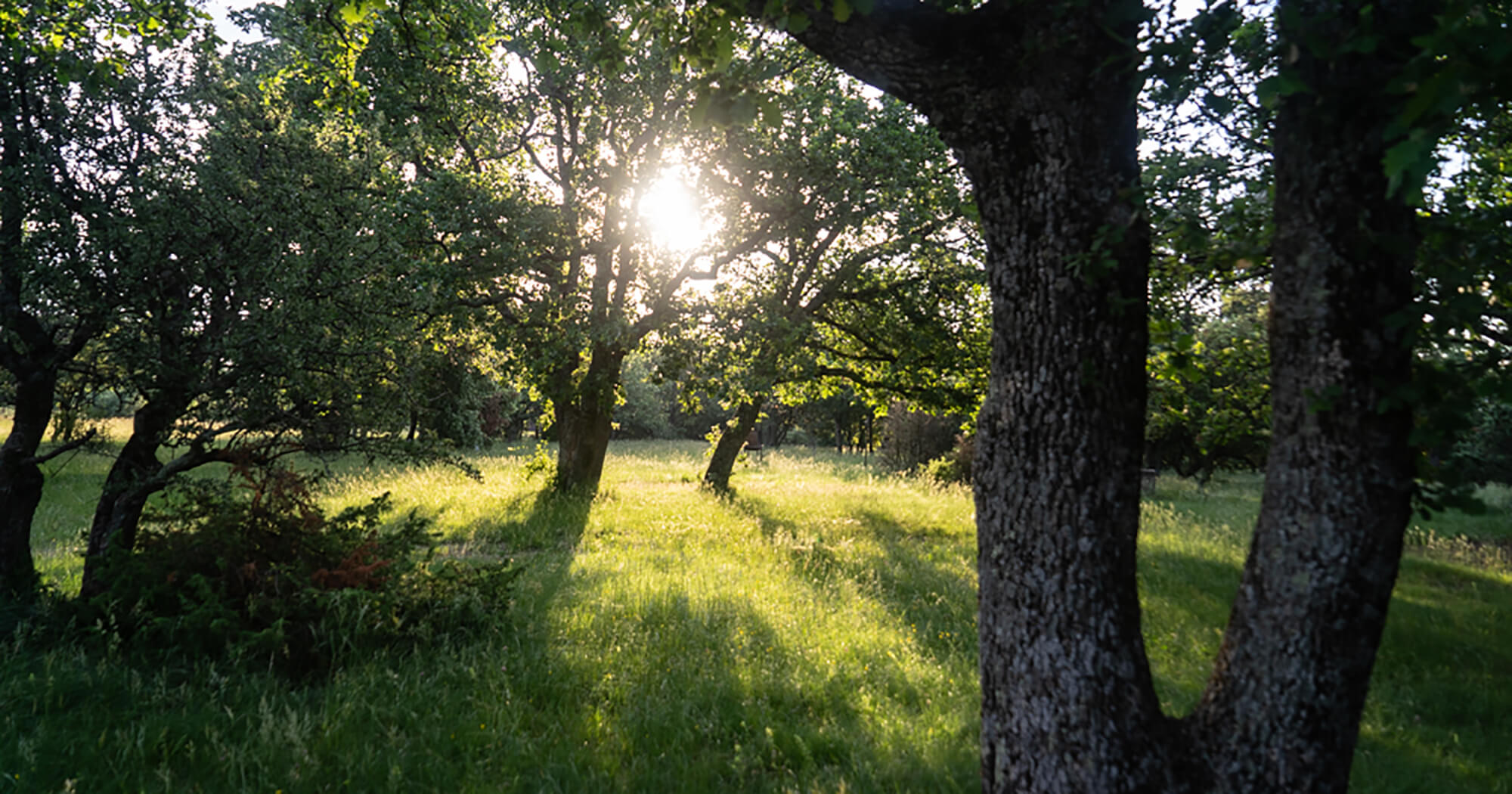Without intervention (fire, grazing, etc.), Mediterranean scrublands and grasslands become covered with shrubby vegetation, often dominated by kermes oak and holm oak. This dense vegetation provides shelter for species that will come to feed at the edges and in the open areas nearby. The specific diversity of these environments depends on their age. When young, they will be rich in reptiles. When they are older, they will provide shelter for cave-dwelling species. Open your eyes and listen carefully, you may recognise the species presented here!
Did you know? Mediterranean forests are home to 10% of the world’s plant species, more than half of which are endemic. Today, a fifth of them are threatened.
Five species of this woodland
False ilex hairstreak
The false ilex hairstreak is a small butterfly. It is brown, dotted with orange and white lines, with a small tail on the hind wings. It lives in dry, warm environments such as scrubland and the edges of dry woodland. It lays its eggs on kermes or holm oaks. It can be seen between May and August.
Holm oak
The holm oak, or Quercus ilex, very often dominates Mediterranean forests, which are then called yeuseraies (oak forests). It has small, leathery (prickly) leaves when it grows in dry, well-lit or heavily grazed areas. In shady areas, its leaves are large and smooth. It does not lose its leaves in winter, providing a highly prized shelter for many species. When it is old, its cavities and cracks serve as habitats for cave-dwelling fauna: bats, insects, small mammals, etc
Did you know? A large part of the campsite is covered in oak trees, and an entire panel is dedicated to them.
Slow worm
Like the three-toed skink, which you will find in the garrigue, the slow worm is not a snake, but a lizard! It feeds on invertebrates such as slugs, earthworms, spiders and insects. They live in shady parts of gardens, meadows, hedges and forests. It can spend the winter in piles of wood, manure or even in galleries dug by itself and sealed with earth. Like all other species of lizard and snake, the slow worm is protected by French law. Habitat fragmentation and pesticides are the main factors behind the disappearance of a large proportion of its population.
Subalpine warbler
This warbler prefers fairly bushy vegetation, such as oak scrub and coppices. It builds its nest there, generally in a low bush at a low height (between 15 and 90 cm). It is mainly an insectivore, feeding on orthopterans, butterflies, larvae and spiders found in foliage. It can be seen here from March to September-October.
Cicada
Cicadas are greyish-brown and measure around 5 cm. Although they are difficult to see, you can easily hear their song, which is characteristic of the south of France. It is produced by the contraction and relaxation of a specialised abdominal organ. This nuptial song is produced by the males who cymbal to attract the females.
Did you know? Larvae live in the ground, often for several years. After emerging from the ground, their aerial life lasts only a month or two, enough time to moult and reproduce. If you look carefully, you may find an exuvia like the one in this photo.
